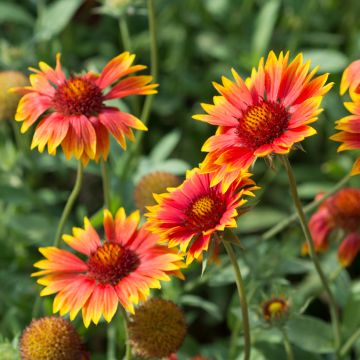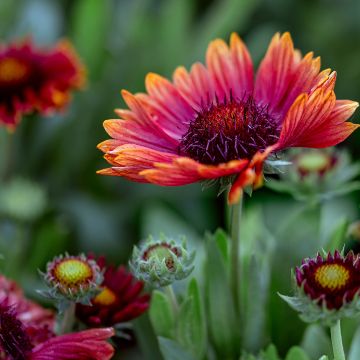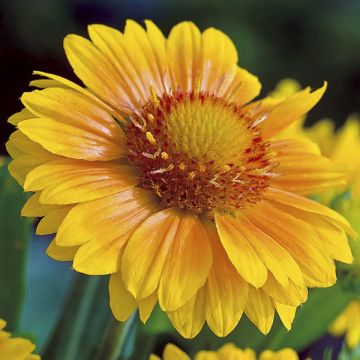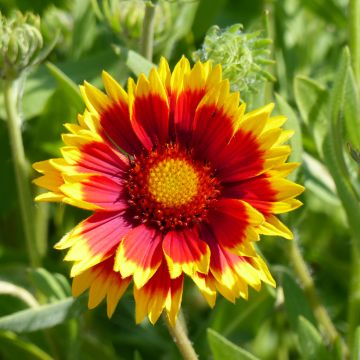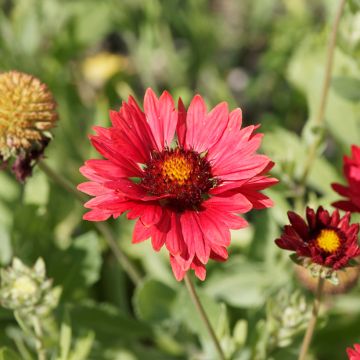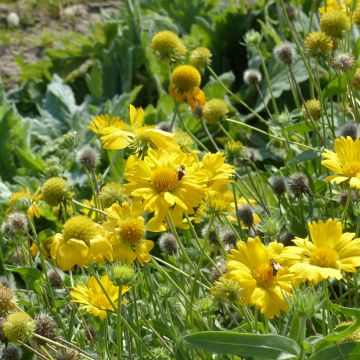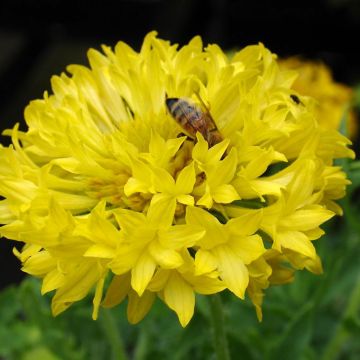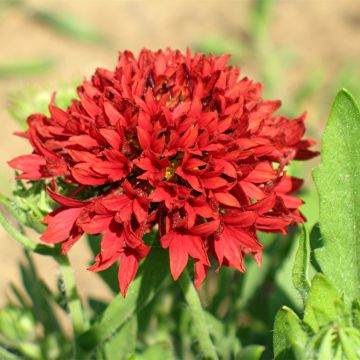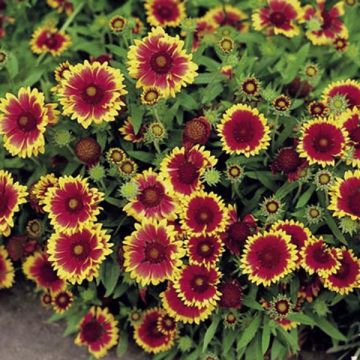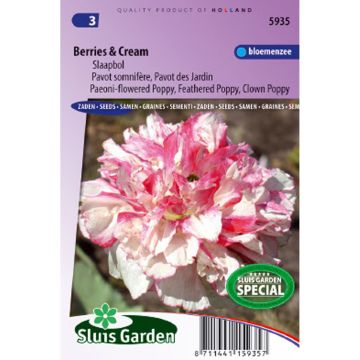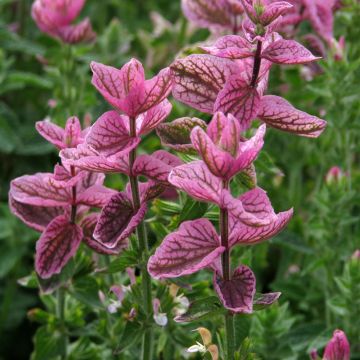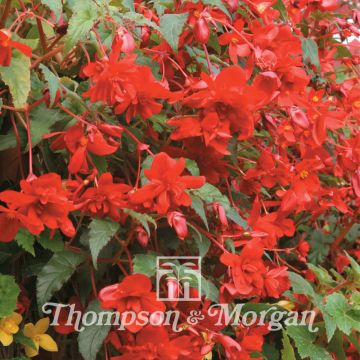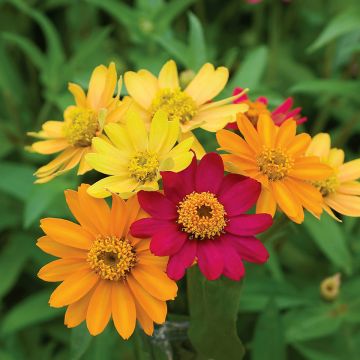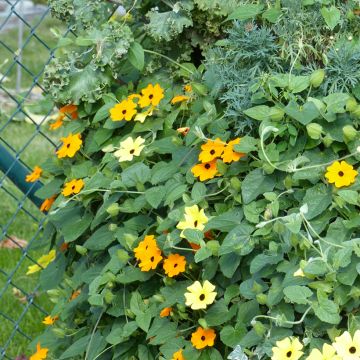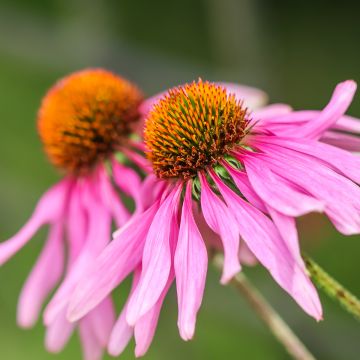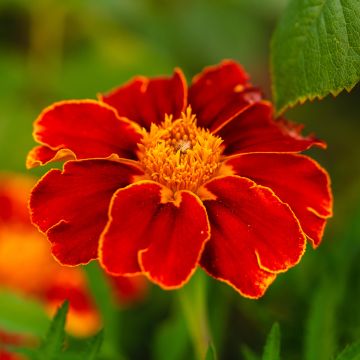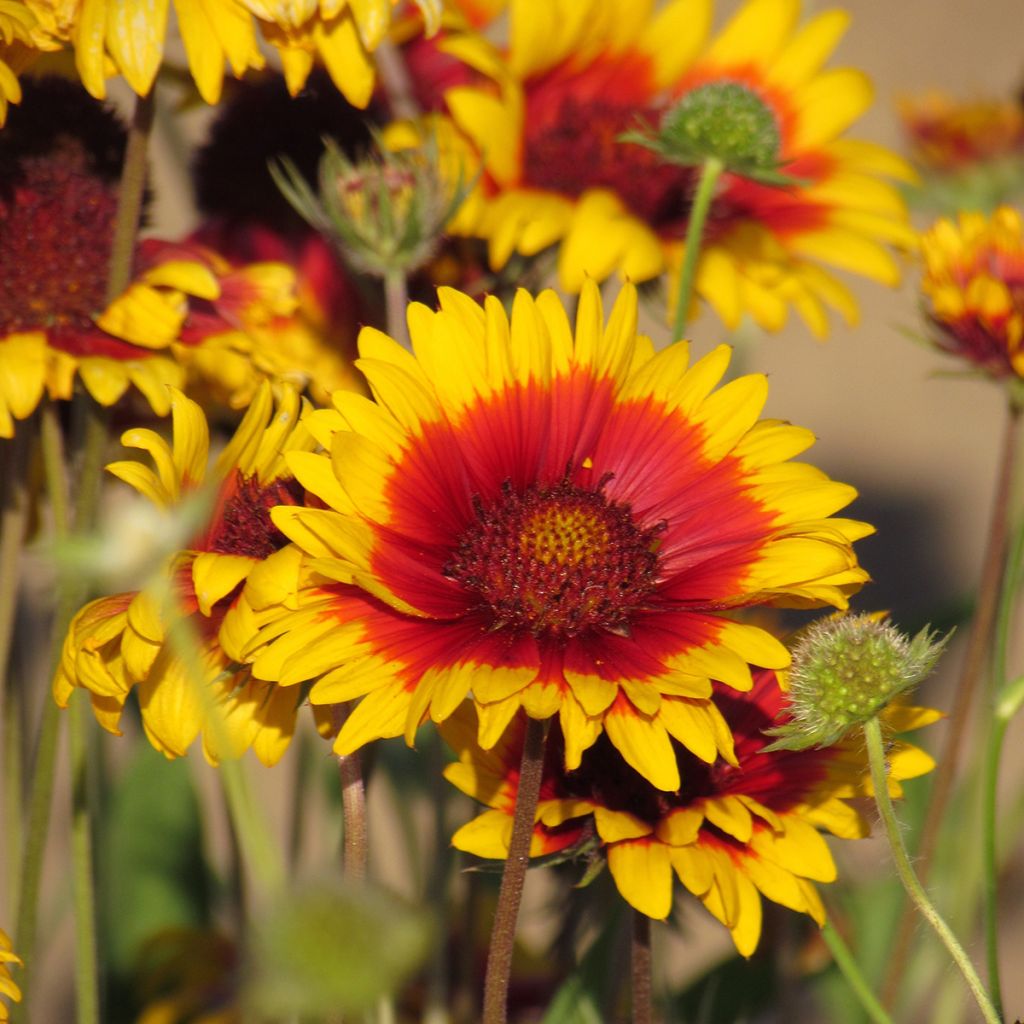

Gaillardia Torchlight - seeds
Gaillardia Torchlight - seeds
Gaillardia x grandiflora Torchlight, Lueur de Torche, Fackelschein
Blanket Flower, Great Blanketflower
Special offer!
Receive a €20 voucher for any order over €90 (excluding delivery costs, credit notes, and plastic-free options)!
1- Add your favorite plants to your cart.
2- Once you have reached €90, confirm your order (you can even choose the delivery date!).
3- As soon as your order is shipped, you will receive an email containing your voucher code, valid for 3 months (90 days).
Your voucher is unique and can only be used once, for any order with a minimum value of €20, excluding delivery costs.
Can be combined with other current offers, non-divisible and non-refundable.
Home or relay delivery (depending on size and destination)
Schedule delivery date,
and select date in basket
This plant carries a 6 months recovery warranty
More information
We guarantee the quality of our plants for a full growing cycle, and will replace at our expense any plant that fails to recover under normal climatic and planting conditions.
Would this plant suit my garden?
Set up your Plantfit profile →
Description
The perennial Gaillardia Fackelschein, also known as Torchlight, is distinguished by its flowers with a yellow and brown heart, surrounded by red, toothed petals bordered by a yellow edge in two rows. It is a generous variety, flowering abundantly throughout the summer and beyond. Characterised by large daisy-like flowers and tall stems, they are particularly suitable as cut flowers. Under the influence of wind or the weight of the large flowers, the stems sometimes tend to bend, a more sheltered situation or staking can remedy this. Although this continuously flowering perennial is relatively short-lived, it stands out for its exemplary frugality, hardiness, and drought resistance. Opt for a sunny location in rocky or sandy, dry soil, whether it be in paving, a scree garden, a rockery, or even a large pot on the terrace.
Gaillardia x grandiflora is a horticultural hybrid resulting from the cross-breeding between Gaillardia aristata, a perennial native to the great central plains of North America, and Gaillardia pulchella, an almost annual plant native to northern Mexico and the south and centre of the United States. Belonging, like its two parents and like the sunflower, to the large family of asteraceae, this hybrid has inherited from its first parent a beautiful hardiness and increased longevity, and from the second its extraordinary floriferousness, rapid growth, and extreme frugality.
The 'Fackelschein' variety is also known by the synonym 'Torchlight' because of its very bright illuminating flowers. Forming a clump 70 cm tall and 40 cm wide, it is adorned with large flower heads 8 to 12 cm in diameter from summer to autumn, attracting pollinating insects. The bicoloured petals are orange and red with golden yellow tips and frame a highly contrasting bicoloured heart, composed of a central yellow disk surrounded by tiny blood-red florets. The greyish-green, slightly fuzzy foliage has narrow, slightly lobed or deeply cut leaves. Even at the end of flowering, the flowers of this variety retain a distinctive appeal, somewhat like the beauty of echinaceas.
Gaillardia thrives in light, well-drained, and rich soils, and easily withstands drought and heat, so don't hesitate to plant it in full sun. Due to its tendency to self-seed abundantly, it is recommended to remove faded flowers to encourage new blooms and prevent excessive spreading. Although considered somewhat outdated nowadays, gaillardias, alongside grandiflora coreopsis and gauras, remain among the champions of floral abundance. Even the wild variety Gaillardia aristata proves to be very floriferous. The main drawback of these plants is their sensitivity to ambient humidity, even in well-drained soil. In warm gardens, especially in average quality soils, gaillardia proves to be a real boon, harmoniously associating with lavenders, rosemarys, cotton lavenders, rockroses, Geranium sanguineum, as well as wormwoods and grasses like Stipa, all plants as frugal as they are floriferous. In a meadow, consider associating leucanthemums or scabiosas with your gaillardias.
Flowering
Foliage
Plant habit
Botanical data
Gaillardia
x grandiflora
Torchlight, Lueur de Torche, Fackelschein
Asteraceae
Blanket Flower, Great Blanketflower
Gaillardia 'Torchlight'
Cultivar or hybrid
Other Gaillardia seeds
View all →Planting and care
Sow under cover: Sow at 20°C from February to May in a well-drained substrate, pH 5.8 to 6.8. Lightly cover the seeds with a thin layer of vermiculite and keep them in the light as they need a minimum brightness to germinate. The young shoots appear approximately 18 days after sowing. Then transplant when all risk of frost is gone and the plants are strong enough to be handled.
Direct sowing in place: You can sow directly in open ground from May to June in well-prepared soil. Make sure to space your plants at least 30 cm apart.
To strengthen your Gaillardia plants, divide the clump after two to three years in spring or autumn.
Sowing period
Intended location
Planting & care advice
This item has not been reviewed yet - be the first to leave a review about it.
Similar products
Haven't found what you were looking for?
Hardiness is the lowest winter temperature a plant can endure without suffering serious damage or even dying. However, hardiness is affected by location (a sheltered area, such as a patio), protection (winter cover) and soil type (hardiness is improved by well-drained soil).

Photo Sharing Terms & Conditions
In order to encourage gardeners to interact and share their experiences, Promesse de fleurs offers various media enabling content to be uploaded onto its Site - in particular via the ‘Photo sharing’ module.
The User agrees to refrain from:
- Posting any content that is illegal, prejudicial, insulting, racist, inciteful to hatred, revisionist, contrary to public decency, that infringes on privacy or on the privacy rights of third parties, in particular the publicity rights of persons and goods, intellectual property rights, or the right to privacy.
- Submitting content on behalf of a third party;
- Impersonate the identity of a third party and/or publish any personal information about a third party;
In general, the User undertakes to refrain from any unethical behaviour.
All Content (in particular text, comments, files, images, photos, videos, creative works, etc.), which may be subject to property or intellectual property rights, image or other private rights, shall remain the property of the User, subject to the limited rights granted by the terms of the licence granted by Promesse de fleurs as stated below. Users are at liberty to publish or not to publish such Content on the Site, notably via the ‘Photo Sharing’ facility, and accept that this Content shall be made public and freely accessible, notably on the Internet.
Users further acknowledge, undertake to have ,and guarantee that they hold all necessary rights and permissions to publish such material on the Site, in particular with regard to the legislation in force pertaining to any privacy, property, intellectual property, image, or contractual rights, or rights of any other nature. By publishing such Content on the Site, Users acknowledge accepting full liability as publishers of the Content within the meaning of the law, and grant Promesse de fleurs, free of charge, an inclusive, worldwide licence for the said Content for the entire duration of its publication, including all reproduction, representation, up/downloading, displaying, performing, transmission, and storage rights.
Users also grant permission for their name to be linked to the Content and accept that this link may not always be made available.
By engaging in posting material, Users consent to their Content becoming automatically accessible on the Internet, in particular on other sites and/or blogs and/or web pages of the Promesse de fleurs site, including in particular social pages and the Promesse de fleurs catalogue.
Users may secure the removal of entrusted content free of charge by issuing a simple request via our contact form.
The flowering period indicated on our website applies to countries and regions located in USDA zone 8 (France, the United Kingdom, Ireland, the Netherlands, etc.)
It will vary according to where you live:
- In zones 9 to 10 (Italy, Spain, Greece, etc.), flowering will occur about 2 to 4 weeks earlier.
- In zones 6 to 7 (Germany, Poland, Slovenia, and lower mountainous regions), flowering will be delayed by 2 to 3 weeks.
- In zone 5 (Central Europe, Scandinavia), blooming will be delayed by 3 to 5 weeks.
In temperate climates, pruning of spring-flowering shrubs (forsythia, spireas, etc.) should be done just after flowering.
Pruning of summer-flowering shrubs (Indian Lilac, Perovskia, etc.) can be done in winter or spring.
In cold regions as well as with frost-sensitive plants, avoid pruning too early when severe frosts may still occur.
The planting period indicated on our website applies to countries and regions located in USDA zone 8 (France, United Kingdom, Ireland, Netherlands).
It will vary according to where you live:
- In Mediterranean zones (Marseille, Madrid, Milan, etc.), autumn and winter are the best planting periods.
- In continental zones (Strasbourg, Munich, Vienna, etc.), delay planting by 2 to 3 weeks in spring and bring it forward by 2 to 4 weeks in autumn.
- In mountainous regions (the Alps, Pyrenees, Carpathians, etc.), it is best to plant in late spring (May-June) or late summer (August-September).
The harvesting period indicated on our website applies to countries and regions in USDA zone 8 (France, England, Ireland, the Netherlands).
In colder areas (Scandinavia, Poland, Austria...) fruit and vegetable harvests are likely to be delayed by 3-4 weeks.
In warmer areas (Italy, Spain, Greece, etc.), harvesting will probably take place earlier, depending on weather conditions.
The sowing periods indicated on our website apply to countries and regions within USDA Zone 8 (France, UK, Ireland, Netherlands).
In colder areas (Scandinavia, Poland, Austria...), delay any outdoor sowing by 3-4 weeks, or sow under glass.
In warmer climes (Italy, Spain, Greece, etc.), bring outdoor sowing forward by a few weeks.































